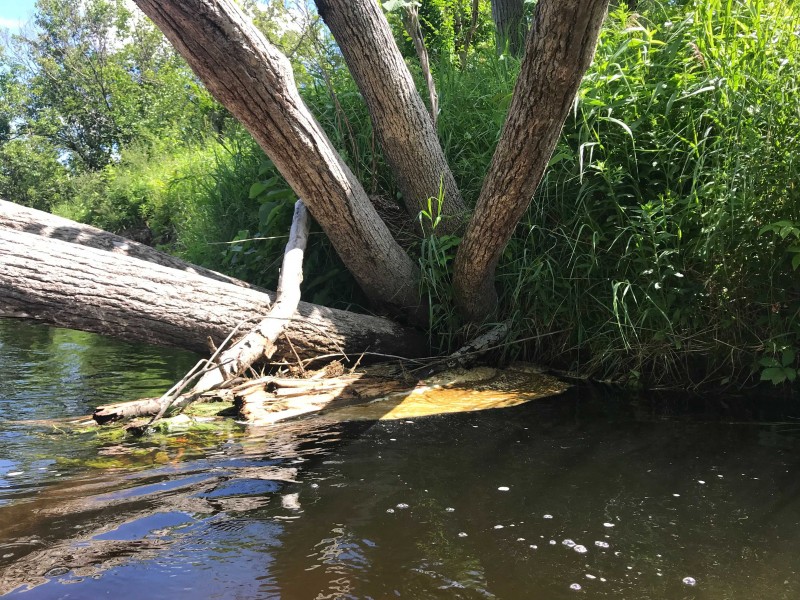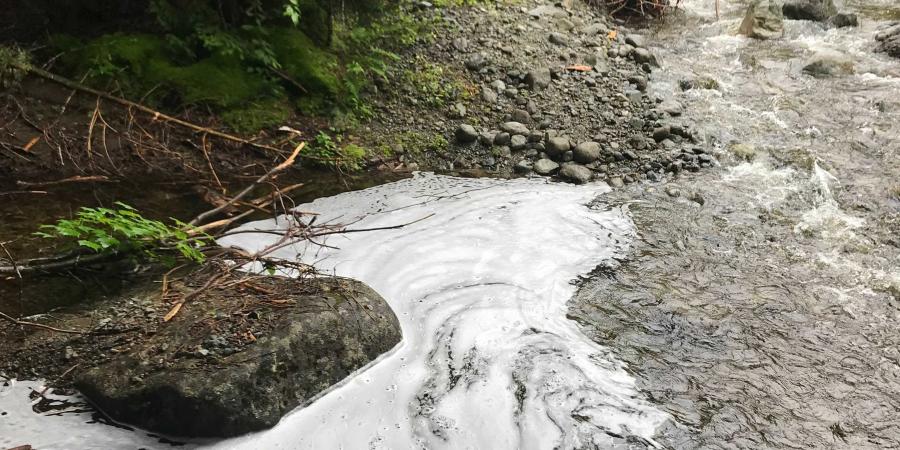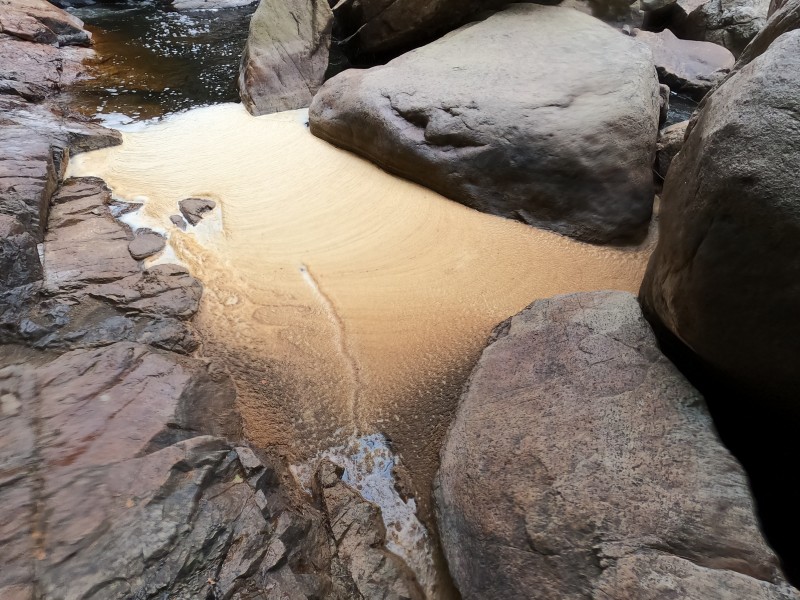While hiking near a stream in the Ausable watershed, I noticed a light tan foaming blob on the water's surface next to the bank. Stream foam or suds are often seen on windy days, accumulating against logs, on the banks of streams or along lake shores. This is most often a harmless natural occurrence. Foam can be found during autumn when leaves are falling, throughout spring when plants lose their buds, and on warm summer days. But what causes the formation of stream foam?
Naturally occurring stream foam can be off-white, light tan, or brownish and can have a fishy or earthy odor. It’s formed by dissolved organic matter, usually dissolved organic carbon (DOC). DOC results from the breakdown of organic debris, such as sticks, leaves, and tannins and watershed soils that hold organic materials. One way to describe organic matter is to compare it to a tea bag. The earth and its soils are rich in organic materials from the breakdown of plants and animals and as water moves through the soils of a watershed it collects the organic matter and then darkens just like a cup of hot tea. Once in a stream, the color largely dissipates but can tint the foam it produces.
Natural foam on the Ausable River.
In a stream, DOC acts as a surfactant reducing the surface tension of water – a common example of a surfactant is olive oil. DOC interacting with the moving water causes tiny air bubbles to form, creating an area of lower surface tension so water subsequently flows away from that spot and foam can stabilize there. Natural foam build-up is more prevalent in streams and rivers after rainfall because there's more water moving through the ground and more organic matter being dissolved. With higher water, more turbulent conditions form bubbles, and the DOC attaches to these forming foam at the surface.
Support our water quality monitoring work for clean water and healthy streams. Give with confidence today!
While most foam is naturally occurring, it can also be human-made. Synthetic or human-made foam is usually a by-product of chemical runoff or industrial discharge. Sources include household cleaning products that contain synthetic surfactants, house paint, pesticides used on lawns or fields, or motor oils running off impervious surfaces. These chemicals – small repeating amounts over time or large pulses – can disrupt the aquatic ecosystem and undermine its balance. Human-made foam tends to smell fragrant (from detergent discharge) or unpleasant (the product of septic failures). Although you should never touch it, human-made foam is sticky and usually a pure white color but may turn darker as debris particles filter through. It will often be found near the point of discharge.

Organic rich foam trapped by a tree and natural debris on the East Branch of the Ausable River.
To minimize human-made foam, reduce the use of synthetic chemicals on outdoor surfaces and, where you do use them, follow label instructions carefully. Also, make sure your septic system is properly maintained. Most residents of the Ausable watershed rely on private septic systems. Wastewater leaving your house from the shower, toilet, sink, clothes washer, and dishwasher all enter your septic system, carrying chemicals, solids, grease, dirt, and pathogens. A properly designed and maintained septic system treats and disposes of this wastewater, preventing contaminants from entering our natural waterways.
Story by Leanna Thalmann, Water Quality Associate.
Sign-up for our e-newsletter to get weekly updates on the latest stories from the Ausable River Association.






